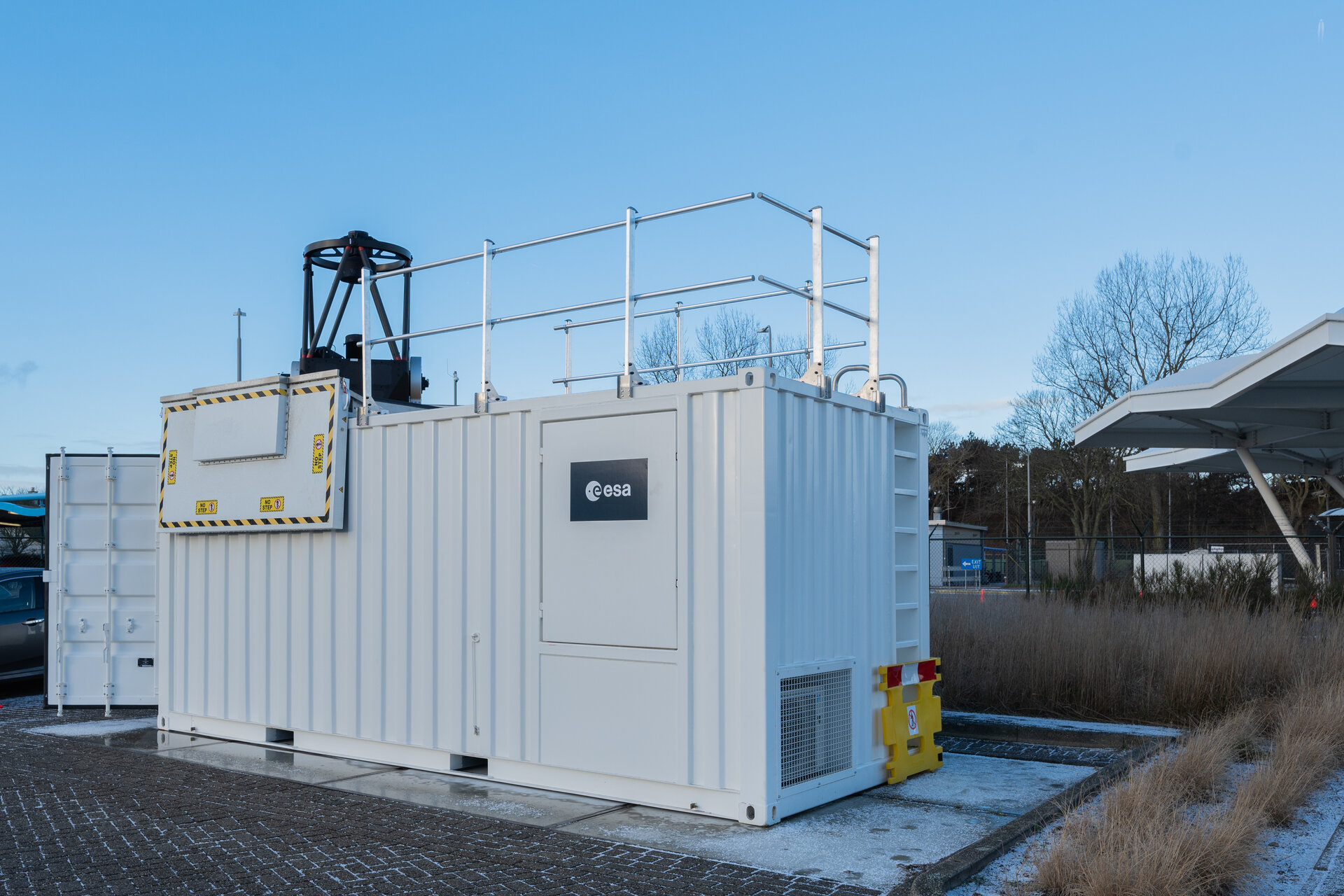ESA shipping container's laser link to space
ESA’s very latest laboratory extension is portable in nature: hosted within a standard shipping container, this ESA Transportable Optical Ground Station, ETOGS, can be transported all across Europe as needed, to perform laser-based optical communications with satellites – including NASA’s Psyche mission, millions of kilometres away in space.
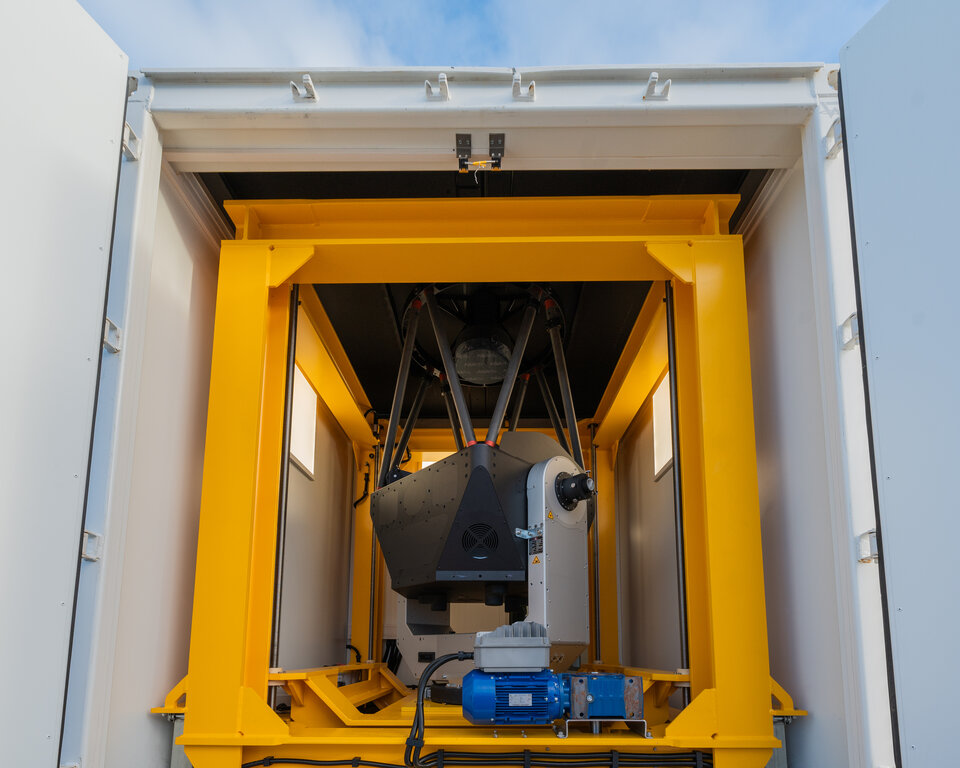
Formally part of the Agency’s Optics and Optoelectronics Laboratory, the station will serve as a flexible testbed for optical telecommunications hardware and systems. ETOGS can also support other activities that require looking at the sky with a telescope or pointing skyward with a laser, such as space debris monitoring or orbit determination via laser ranging.
ETOGS consists of a standard 6-m (20 ft) long shipping container, customised to host an 80-cm diameter telescope on a lifting platform and a climate-controlled operator area. Laser transmitters, receivers and other required equipment can be attached to this flexible structure to serve each specific campaign. Hauled by lorry, the station can be deployed wherever needed and powered via a mains attachment, diesel generator or a solar-powered battery assembly.
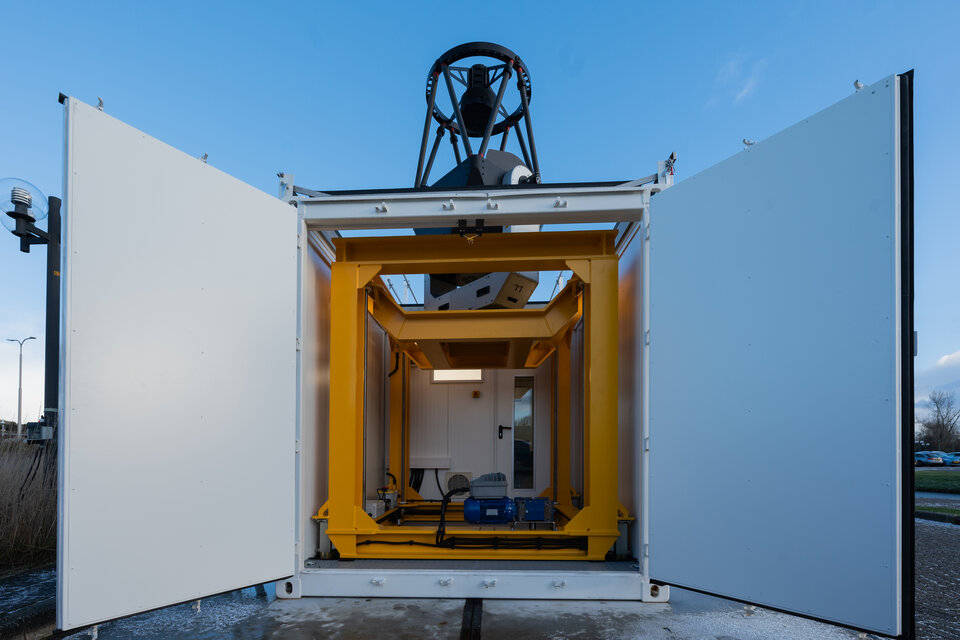
Responding to optical communications priorities
ESA optoelectronics Engineer Jorge Piris explains: “This station has really been created in response to the needs of the fast-developing optical communications community for a flexible testbed than can be deployed on a representative on-ground environment. One of the most relevant questions in optical communications is to what extent might the surrounding environment affect the quality of the link – such as background light in urban areas, or atmospheric turbulence due to weather.
“This is most crucial when it comes to receiving signals from quantum communications systems, since the quantity of light involved is extremely low, with the information transmitted via individual photons. With this station we can really start to answer these questions by operating from numerous different locations. By providing our partners with a ready test platform like this, we support hardware validation and iteration without the high development costs of a dedicated ground station.”
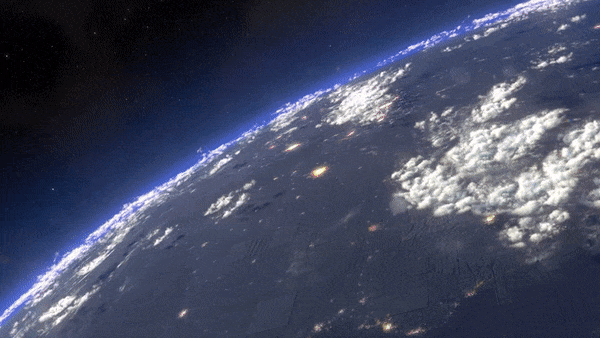
Light-based messaging enables quantum leap in security
Optical and quantum technologies promise to revolutionise connectivity on a global scale. By using pulses of light with a much higher frequency than radio waves, optical communication enables the transfer of more data per given instant. Optical communications through fibre optic cables underpins the modern terrestrial internet infrastructure, but links with satellites remain largely dependent on lower-frequency, lower-bandwidth radio waves.
And by exploiting the quantum properties of light, systems such as ‘quantum key distribution’ will help safeguard data at to a previously inconceivable degree; the security of the exchange of cryptographic keys is safeguarded by the physical properties of light particles, making messaging resilient to eavesdropping by bad actors.
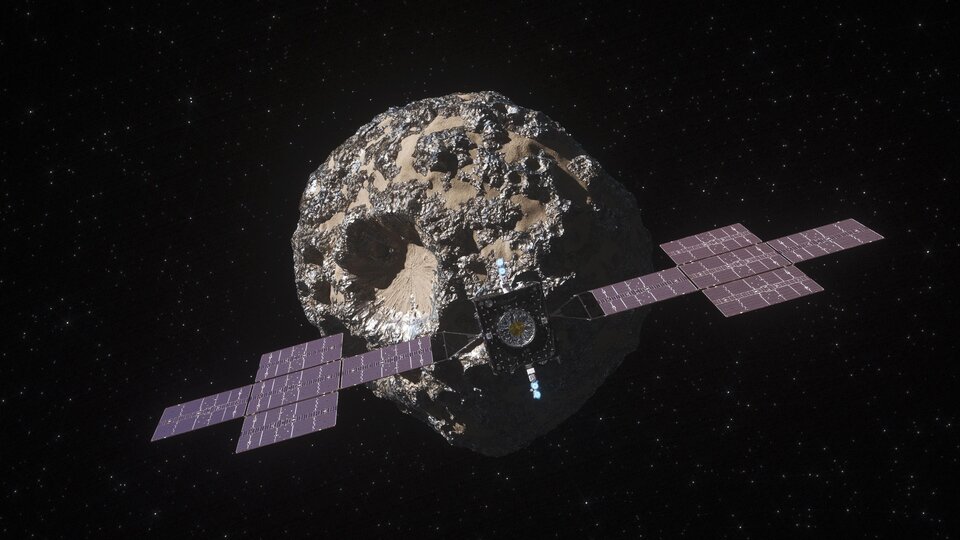
Jorge adds: “The station’s 80 cm telescope is the baseline size envisioned for quantum key distribution on a commercial scale, so we anticipate the station being used for the demonstration and validation of satellite-based quantum communications.”
Shining a light into deep space
The first operational mission for this new ESA asset will be to support the deep space optical communication demonstration with NASA’s Psyche mission scheduled for 2025.
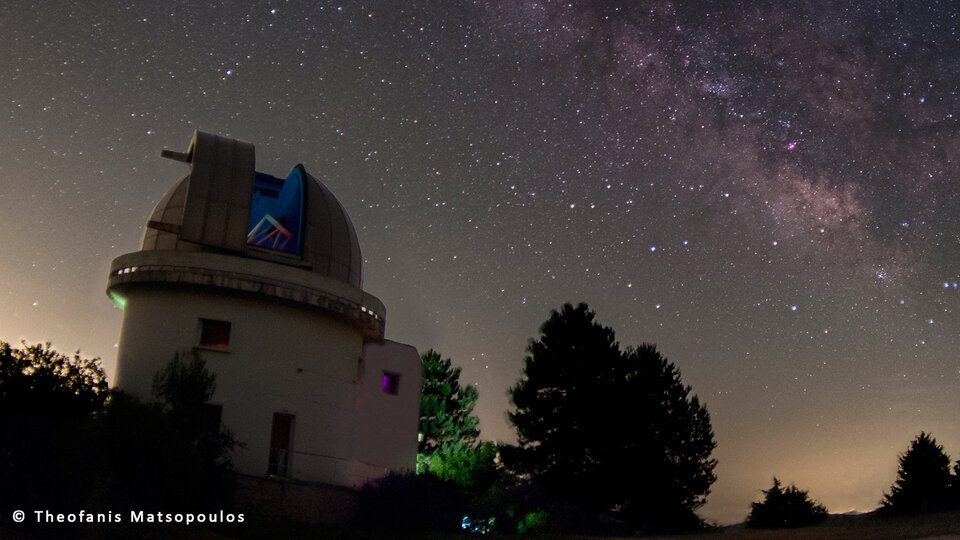
ESA is collaborating with a European consortium and the National Observatory of Athens to develop and deploy ETOGS at Kryoneri Observatory in Greece to host a multi-beam Ground Laser Transmitter.
The objective is to uplink a powerful infrared laser signal of up to 7kW, enabling the onboard laser terminal of NASA’s Psyche spacecraft to point back to Earth in turn. This link will cover unprecedented distances of up to 2.7 astronomical units – circa 403 million km – to mark a new era for optical communications in deep space.
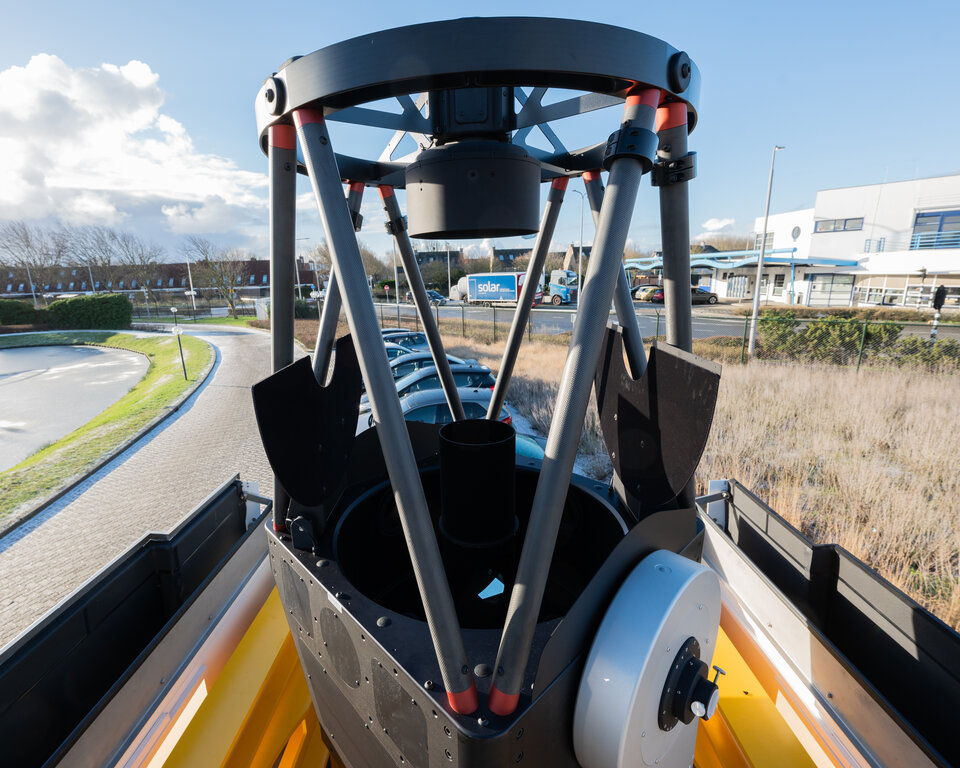
ETOG’s container has been built by WtW in Germany, with its telescope coming from Astrosysteme Austria. The remaining elements to complete an operational system will come largely from project and activity deliverables. Jorge notes: “One of the exciting parts of this project is putting together the various deliverables from different projects into a single set-up, then demonstrating their synergy to work as a system.”
For now, ETOGS is being equipped at ESA’s ESTEC technical centre in the Netherlands. The OOEL Lab team will use its telescope to acquire images of the International Space Station and other satellites, to validate the station has the required stability and tracking capability.
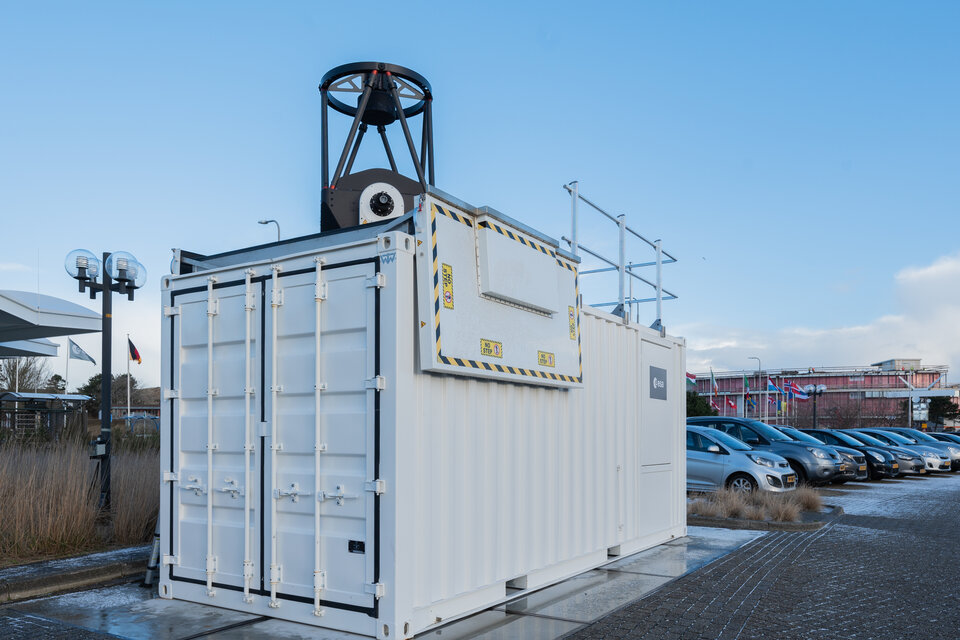
Later this year ETOGS, with the deep space laser transmitter mounted on it, will be tested from Kryoneri in Greece using ESA’s Alphasat satellite in geostationary orbit at 36 000 km altitude, which is equipped with an optical communications system.
Once operational, the station will operate as part of the OOEL Lab, so will be at the disposal of ESA projects as well as companies and research institutions of Agency Member States.
The station has been developed and is being run by ESA’s Opto-Electronics section, which is dedicated to systems that utilise or control light. This section is part of the Agency’s Directorate of Technology, Engineering and Quality, tasked with preparing the advanced technologies and providing the engineering support to make future missions and projects possible.


